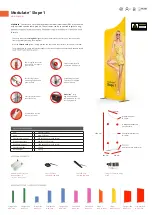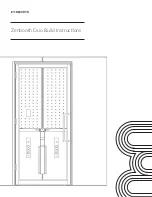
Page 2
Where and when to fog
The Black Flag®/Burgess® Fogger is designed to provide fast control of
mosquitoes, fl ies and other fl ying pests in outdoor areas such as yards,
patios, picnic areas, campgrounds, and other places where insects can
spoil outdoor living.
The ideal time to fog is around dusk, when the wind has usually died
down and the temperature at ground level is somewhat higher than
that of the air a few feet off the ground. This temperature inversion will
tend to hold the fog in the treated area for a longer period of time. It
is not advisable to attempt fogging when the wind is blowing harder
than fi ve miles an hour, since the fog will be blown away before it has
the opportunity to be eff ective.
Never use wet fog on plants, shrubs or outdoor carpeting, etc. Since
the oily residue could have damaging eff ects. Keep the Fogger about
5 feet away from the objects being treated, and let the fog drift in the
desired direction. At this distance, any non-vaporized particles of
insecticide will have settled to the ground. Always keep the breeze at
your back when operating the Fogger.
DO NOT
USE THE BLACK FLAG®/BURGESS® FOGGER INDOORS. Operat-
ing the fogger in an enclosed area where fog can become heavily
concentrated, may cause fi re or explosion.
Outdoor
Use Outdoors
Only
Indoor
Do Not Use
Indoors
Dry and wet fog
Dryness or wetness of the fog is controlled by the rate of pumping. Pumping at the
recommended rate of once every 3 to 4 seconds will produce the most eff ective
fog. The dryness of the fog can be determined by passing a piece of dry cardboard
through the fog about 18 inches from the end of the nozzle. If the cardboard appears
wet you are pumping too fast. Fog should appear white in color. If fog appears brown
or yellow in color you are pumping too slow.
Dry fog is recommended.
This increases the penetrating ability of the insecticide
and allows the fog to cover a larger area. Wet fog contains particles of insecticide that
may not have been completely vaporized.
The oily residue left by wet fog may be
harmful to certain species of fl owers, growing plants, outdoor carpeting, etc.
BEFORE YOU BEGIN CONTINUED




































